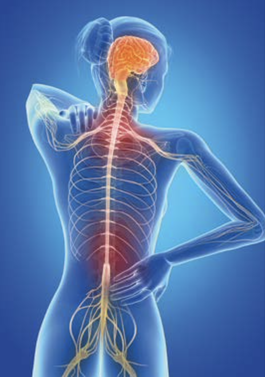Have you heard of degenerative disc disease and wondered what it is? Maybe you’ve asked yourself if you’re at risk, or how it happens and whether it’s possible to prevent it.Degenerative disc disease (DDD) is a common condition in which age-related wear-and-tear on a disc causes pain, instability, and other symptoms. When we reach the age of 50 and beyond, regardless of gender, more than 90% of the population has the condition.
The most commonly affected joints include those in the cervical region (neck), and lumbar region (lower back). These areas of the spine are more susceptible as they undergo the most motion and stress. DDD occurs, as its name suggests, when the discs between the vertebrae degenerate, or deteriorate. The discs narrow and develop tears. The disc material can protrude into the spinal canal, called posterior disc protrusion. Bony spurs (osteophytes) can grow at the edges of the vertebrae. Together, reduced disc height and protrusion can combine with spur growth to cramp the space where a nerve leaves the spine. It’s like a narrow tunnel; there’s less room to move. These disc and bony changes can press on the nerves and cause pain. If a nerve is compressed in the neck, it might cause arm pain; if it’s a compressed nerve in the lower back, shooting pain could strike the leg. Symptoms, though, might not relate directly to a compressed nerve. There might be pain on bending, lifting or sitting. Relief may be found by changing positions, lying down or walking. Or there might be flare-ups that come and go. The amount of pain varies between individuals and can range from minor irritation to severe. Surprisingly, sometimes there’s no pain at all; some people are shocked when an MRI reveals they have long-standing, significant issues with spurs, a narrowed disc height and degeneration... but there are no symptoms. Being pain-free doesn’t guarantee you don’t have DDD. WHO IS AT RISK? Whilst being older is the biggest risk, other factors can accelerate the process of degeneration. These include:
To aim for prevention, we should reduce any risk factors. While we can’t reverse our age, we can maintain an ideal weight, quit smoking, lift correctly, and improve our posture. Moderate, daily exercise can help strengthen the muscles that surround the damaged discs without placing too much stress on the spine. Regular stretching can help DDD, whilst also increasing your flexibility and strength. If you’d like more advice about prevention, or need targeted treatment, speak to your chiropractor.
0 Comments
Leave a Reply. |
AuthorAdam's Back is a team of dedicated complimentary health professionals. Our aim is to support you in finding drug-free solutions for better health. Archives
July 2024
Categories |
Search by typing & pressing enter


 RSS Feed
RSS Feed